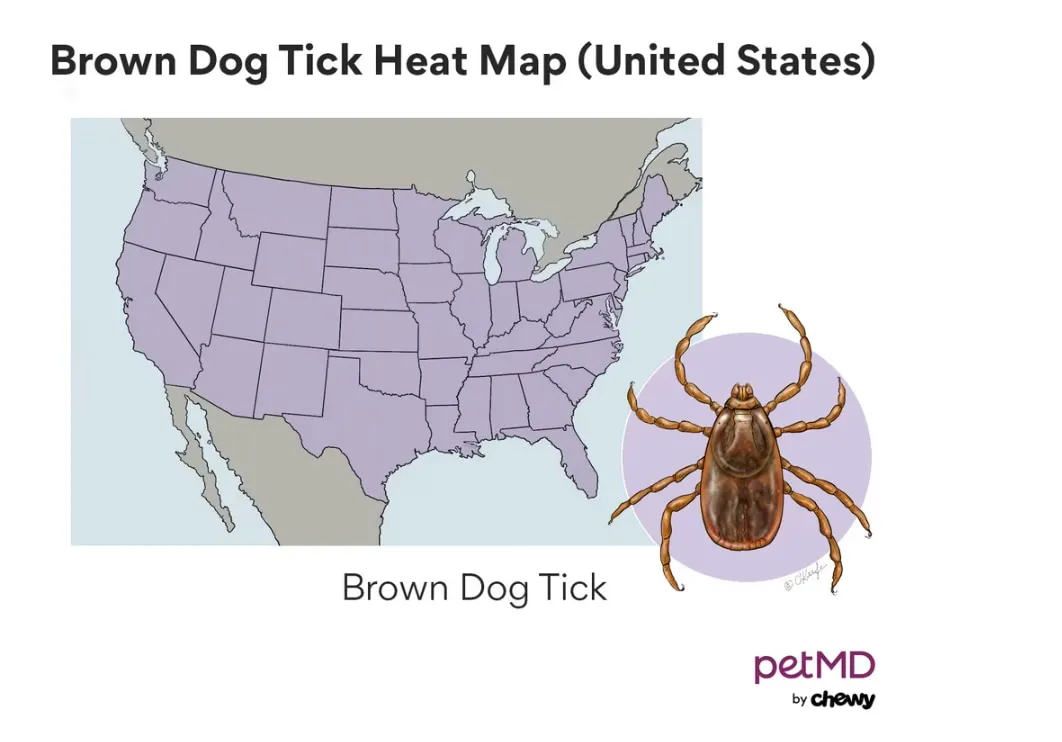Preventative care is the cornerstone of keeping your canine companion healthy and happy. Among the most critical aspects of this care is protecting your dog from fleas and ticks, persistent external parasites that can pose serious health risks. While prevention is key, understanding the Best Tick Removal Medicine For Dogs is equally vital, as these treatments often serve a dual purpose: repelling new parasites and effectively eliminating any existing ones that have latched onto your pet. This comprehensive guide, crafted by the experts at Dog Care Story, will walk you through everything you need to know about protecting your dog from ticks, from understanding their lifecycle to selecting the most effective treatment options available on the market.
Ticks are more than just a nuisance; they are carriers of various diseases that can severely impact your dog’s well-being and, in some cases, even spread to humans. From itchy bites to debilitating illnesses, the threat posed by ticks necessitates a proactive and informed approach. Choosing the right medication involves considering several factors, including your dog’s lifestyle, geographical location, and specific health needs. We’ll delve into various types of tick removal and prevention medicines, discussing their mechanisms of action, application methods, and important safety considerations, all to empower you to make the most informed decision for your beloved pet.
The Urgent Need for Tick Control in Dogs
Fleas and ticks are ectoparasites, meaning they live on the outside of their host, feeding on blood. While a single bite might seem minor, the consequences can be far-reaching for your dog’s health. The saliva from these parasites can trigger severe allergic reactions, leading to dermatitis, intense itching, skin infections, and even anemia, particularly in puppies or small dogs with heavy infestations. Beyond direct irritation, ticks are notorious for harboring and spreading a variety of dangerous diseases to dogs, including:
- Lyme Disease: Caused by Borrelia burgdorferi, leading to lameness, fever, and swollen lymph nodes.
- Anaplasmosis: Affects blood cells, causing lameness, joint pain, fever, and lethargy.
- Ehrlichiosis: Targets white blood cells, resulting in fever, lethargy, loss of appetite, and bleeding disorders.
- Rocky Mountain Spotted Fever: A severe bacterial disease causing fever, joint pain, swelling, and neurological issues.
- Babesiosis: Attacks red blood cells, leading to anemia, jaundice, and weakness.
- Bartonellosis: A chronic bacterial infection with varied symptoms including fever, lameness, and heart conditions.
Many of these tick-borne diseases can cause long-term health problems if left untreated. Moreover, some of these diseases can be transmitted from dogs to humans, making tick control a public health concern as well. This zoonotic potential underscores the critical importance of keeping your dog free of ticks, not only for their health but also for the safety of your entire household. Effective tick removal medicine for dogs plays a crucial role in breaking this cycle of transmission, protecting both pets and their families.
Year-Round Vigilance: When to Protect Your Dog
Ticks are remarkably resilient and can thrive in diverse geographical areas and climates. While tick activity often peaks in warmer months, many species can survive and remain active even in colder temperatures, particularly in sheltered environments or during mild winters. Because of their hardiness and the persistent threat of disease transmission, veterinarians universally recommend year-round tick prevention for dogs, regardless of where you live or the season.
It’s crucial to initiate tick prevention early in your dog’s life. Most tick removal and prevention products are safe for puppies as young as 8 weeks old. Establishing a consistent, year-round preventative regimen from a young age ensures continuous protection throughout your dog’s life, significantly reducing their risk of infestation and exposure to tick-borne diseases. Consult your veterinarian to determine the appropriate starting age and product for your puppy’s specific needs.
Understanding Tick Medicine: Prevention vs. Removal
When we discuss “tick removal medicine for dogs,” it’s important to clarify the distinction between physical tick removal and the action of parasiticides. Physical tick removal involves manually pulling an embedded tick off your dog’s skin, usually with tweezers or a specialized tick removal tool. While effective for individual ticks, it doesn’t prevent future infestations or address any ticks you might miss. For effective, widespread protection against these blood-sucking parasites, a comprehensive approach using medicinal products is essential. If you find yourself needing to physically remove ticks, consider exploring home remedies for dogs for initial care after removal, but always follow up with vet-prescribed medicine.
Most products marketed as “tick prevention” are, in fact, also highly effective as “tick removal medicine” in the sense that they kill ticks quickly once they come into contact with or bite your dog. These medications work by introducing active ingredients into your dog’s system (oral treatments) or onto their skin and coat (topical treatments) that are toxic to ticks. Once a tick attaches and begins to feed, it ingests or absorbs the medication, leading to its death and detachment. This rapid action minimizes the window for disease transmission, making these preventative medications crucial tools for both preventing new infestations and eliminating existing ticks. The goal is to kill ticks before they can transmit pathogens, which typically requires them to be attached for 24-48 hours. Therefore, a fast-acting tick medicine is a highly effective form of “removal” as it eliminates the parasite from the host.
Factors Guiding Your Choice of Tick Medicine
Selecting the most suitable tick removal medicine for your dog involves a thorough discussion with your veterinarian. They can help you navigate the various options and ensure the chosen product is a safe and effective fit for your pet. Before making a decision, always review the product label carefully and consult with your vet to confirm:
- Species-Specific Product: Ensure the medicine is specifically formulated for dogs, not cats, as some ingredients (like permethrin) can be highly toxic to felines.
- Correct Weight Range: Parasiticides are dosed by weight; using an incorrect dosage can be ineffective or dangerous.
- Parasite Protection Spectrum: Does the product cover fleas, ticks, and any other relevant parasites (e.g., heartworms, intestinal worms) prevalent in your area?
- Administration Guidelines: Whether it should be given with food, on an empty stomach, or applied to dry skin.
- Frequency of Administration: Monthly, quarterly, or longer-acting options exist.
- Onset of Action: How quickly the medicine starts killing ticks.
- Bathing Restrictions: How soon you can bathe your pet after a topical application.
- Safety Concerns & Adverse Reactions: Understand potential side effects and what to do if one occurs.
Beyond these fundamental checks, several other factors should influence your choice of the best tick removal medicine for your dog:
1. Application Method
Tick removal and prevention medicines primarily come in two forms:
- Oral Medications: These are chewable tablets that your dog ingests. They are often flavored, making them appealing to dogs, and integrate into their system, providing protection from within. Oral treatments are a convenient option for many dog parents as they are not affected by water exposure (swimming or bathing) and don’t pose a risk of transfer to children or other pets through touch. However, you must ensure your dog consumes the entire tablet and doesn’t vomit it up before absorption.
- Topical Spot-Ons: These are liquid solutions applied directly to your dog’s skin, typically between the shoulder blades or down the back. They are a good alternative for dogs who are picky eaters or have sensitive stomachs. A key consideration for topical treatments is the drying time; care must be taken to prevent children or other pets from touching or licking the application site before it’s fully dry. They may also be less effective for dogs who swim frequently or require regular bathing, as water can wash away the product or reduce its efficacy.
2. Geography
The prevalence and types of tick species vary significantly by geographic location. Different regions host different local parasite populations, including various species of ticks. Resources like the Companion Animal Parasite Council (CAPC) provide interactive maps and data to identify the specific parasites common in your area. This information is invaluable for choosing a tick medicine that provides comprehensive protection against the exact threats your dog is likely to encounter. For instance, some products are effective against deer ticks but not Lone Star ticks, and vice-versa. Understanding your local tick population is key to selecting the most effective tick removal medicine.
 Geographical Distribution of Ticks in the US
Geographical Distribution of Ticks in the US
 Tick Incidence Map by State
Tick Incidence Map by State
 Regional Tick Species Distribution
Regional Tick Species Distribution
 Annual Tick Risk Assessment by County
Annual Tick Risk Assessment by County
3. Access to the Outdoors
Your dog’s typical outdoor environment is a significant factor in their risk of tick exposure. Places like dog parks, hiking trails, wooded areas, tall grasses, and even overgrown backyards are prime habitats for ticks. Dogs who spend a substantial amount of time in these high-risk areas—especially those venturing into dense brush or areas frequented by wildlife and other dogs—have a much higher chance of encountering ticks.
However, even if your dog spends most of their time indoors, ticks can still find their way to your pet. They can be carried into your home on clothing, shoes, or other pets that go outside. For this reason, veterinarians strongly recommend year-round tick prevention for all dogs, regardless of their indoor/outdoor status. The best tick removal medicine for dogs offers continuous protection, ensuring that even unexpected encounters are quickly neutralized.
4. MDR-1 Gene
Certain dog breeds, such as Collies, Australian Shepherds, and Shetland Sheepdogs, may carry a specific genetic mutation called MDR-1 (Multidrug Resistance 1). This mutation can make it difficult for their bodies to properly break down and eliminate certain medications, leading to increased sensitivity and potential toxicity. While many manufacturers of parasite preventatives have rigorously tested their products for safety in dogs with the MDR-1 mutation, it’s always wise to discuss this with your veterinarian. They may recommend testing your dog for the MDR-1 gene or opting for alternative medications known to be safe for affected breeds.
5. Lifestyle
A dog’s lifestyle and daily activities also play a role in their exposure risk. Working dogs, herding dogs, or hunting dogs that spend extensive periods in fields, forests, or other natural environments are inherently at higher risk of tick infestation compared to companion dogs who mostly stay at home with occasional walks. While no breed is inherently more susceptible to acquiring ticks based on their genetic makeup, their activities and exposure levels certainly dictate the level and type of protection needed. A robust and fast-acting tick removal medicine is often preferred for highly active outdoor dogs.
6. Life Stage
Age and size are critical considerations when selecting tick medication. Puppies and very small dog breeds require specific formulations appropriate for their weight and age. Most tick prevention products have a minimum age requirement of 8 weeks and a minimum weight threshold. Always consult the package insert and your veterinarian to confirm these details. Some specialized products, such as certain topical solutions, are specifically formulated for very young puppies and can be used earlier than 8 weeks, but this is less common for oral tick medicine.
7. Medical Conditions
Certain health conditions can influence the choice of tick medicine. For instance, some newer classes of preventatives, known as isoxazolines, should be used with extreme caution in dogs with a history of seizures, epilepsy, or other neurological diseases. These medications can potentially lower the seizure threshold in susceptible individuals.
It is paramount to have a thorough discussion with your veterinarian before administering any tick medicine if your dog:
- Has a known allergy or has previously experienced an adverse reaction to any medication.
- Is currently sick, debilitated, or significantly underweight.
- Is pregnant, nursing, or planned for breeding in the near future.
Your veterinarian can assess these factors and recommend the safest and most effective tick removal medicine for your dog’s unique health profile.
Over-the-Counter vs. Prescription Tick Medications
The market offers both over-the-counter (OTC) and prescription-only tick removal and prevention medicines. Understanding the differences is key to making an informed choice.
Over-the-Counter Tick Products
OTC tick preventatives do not require a veterinarian’s prescription and are widely available online and in pet supply stores. These products offer convenience and often a lower price point. However, it’s crucial to exercise caution with OTC options. While many are effective, some older formulations or less reputable brands may not be as potent or as broad-spectrum as prescription alternatives. If you opt for an OTC tick medicine, always consult your veterinarian beforehand to ensure it is a safe and appropriate choice for your specific dog, considering their health, lifestyle, and local parasite risks. It’s also worth noting that some cheap flea and tick meds for dogs are available OTC, but effectiveness can vary.
Prescription Tick Products
Prescription tick removal and prevention medications require a valid prescription from your veterinarian. These products often represent the latest advancements in parasitology, featuring newer active ingredients, broader spectrum protection, and rigorously tested safety profiles. While they may carry a higher price tag than some OTC options, most veterinarians advocate for prescription products due to their enhanced efficacy and proven safety record for your dog. They often provide more comprehensive protection, acting as the best tick removal medicine for dogs by killing ticks rapidly and consistently.
Spotlight on Effective Tick Removal & Prevention Medicines for Dogs
Here’s a closer look at some popular and effective tick control products available for dogs, detailing their active ingredients, action, and key considerations. This section focuses on products that specifically target ticks, acting as both preventative and effective tick removal medicine by eliminating attached ticks.
Advantage
- Advantage II: This topical monthly product, containing imidacloprid and pyriproxyfen, is fast-acting against fleas, killing adults, eggs, and larvae within hours. However, it does not provide tick prevention or removal. It’s suitable for dogs and puppies over 7 weeks old and weighing more than 3 pounds, primarily for flea control.
- Advantage Multi: Also a topical monthly product, Advantage Multi combines imidacloprid and moxidectin. It treats fleas, sarcoptic mange, intestinal parasites (hookworms, roundworms, whipworms), and prevents heartworm disease. While fast-acting on fleas, it does not provide tick prevention or removal. It’s for dogs and puppies over 7 weeks and weighing more than 3 pounds.
Bravecto
Bravecto is a highly regarded tick removal medicine for dogs, available as a chewable tablet or topical solution. Its active ingredient, fluralaner, belongs to the isoxazoline drug class. Bravecto is notably fast-acting, beginning to kill fleas within two hours and ticks within 12 hours, providing extended protection for up to 12 weeks. It’s effective against various tick species and has also shown efficacy against demodectic, sarcoptic mange, and ear mites. Due to its isoxazoline component, Bravecto should be used with caution in dogs with a history of seizures, epilepsy, or other neurologic disorders.
Comfortis
Comfortis is a chewable tablet containing spinosad. This product exclusively targets fleas and does not offer tick prevention or removal. It’s a fast-acting agent, killing fleas within 30 minutes. It is for dogs and puppies 14 weeks or older and weighing over 5 pounds, administered monthly.
Credelio
Credelio is a monthly chewable tablet that acts as an effective tick removal medicine for dogs. Its active ingredient, lotilaner, is also an isoxazoline. Credelio swiftly targets both fleas and ticks, beginning to kill fleas within four hours of administration. It’s recommended for dogs and puppies over 8 weeks old and weighing more than 4.4 pounds. Like other isoxazolines, Credelio should be used cautiously in dogs with a history of seizures, epilepsy, or neurologic disorders.
Credelio Quattro
An advanced option for comprehensive parasite control, Credelio Quattro is a monthly chewable tablet that goes beyond fleas and ticks. It combines lotilaner (for fleas and ticks) with moxidectin (for heartworms, hookworms, and roundworms), praziquantel (for tapeworms), and pyrantel (for hookworms and roundworms). This makes it one of the broadest-spectrum choices for tick removal medicine for dogs, providing robust protection against six types of parasites. It’s suitable for dogs and puppies 8 weeks of age and older, weighing at least 3.3 pounds. Caution is advised for dogs with neurological conditions due to the isoxazoline component.
Frontline
- Frontline Gold: This topical monthly product contains fipronil, (s)-methoprene, and pyriproxyfen. It’s a fast-acting combination that kills fleas, ticks, and chewing lice within hours, making it an effective tick removal medicine. It’s for dogs and puppies over 8 weeks old and weighing more than 5 pounds.
- Frontline Plus: Similar to Gold, Frontline Plus is a topical monthly solution with fipronil and (s)-methoprene. It kills fleas, ticks, and chewing lice, with a slightly longer onset of action compared to Frontline Gold. It’s for dogs and puppies over 8 weeks old and weighing more than 5 pounds.
- Frontline Shield: This topical monthly medicine includes fipronil, permethrin, and pyriproxyfen. It provides comprehensive protection, killing all fleas, ticks, chewing lice, and stable flies. It also repels mosquitoes, stable flies, and ticks. Frontline Shield is very fast-acting, starting to kill fleas in five minutes and ticks within one hour. It’s for dogs and puppies over 9 weeks old and weighing more than 5 pounds. Crucially, this product is highly toxic to cats due to the permethrin, requiring extreme caution or avoidance in multi-pet households.
K9 Advantix
K9 Advantix II is a topical monthly product that functions as both a repellant and a tick removal medicine. Its active ingredients are imidacloprid, permethrin, and pyriproxyfen. This combination repels and kills fleas, ticks, mosquitoes, and chewing lice, and also repels biting flies. It’s fast-acting, beginning to kill parasites within hours. This product is for dogs and puppies over 7 weeks old and weighing more than 4 pounds. Like Frontline Shield, K9 Advantix II is highly toxic to cats and must be used with extreme caution in households with feline companions.
Nexgard
Nexgard is a popular monthly chewable tablet that serves as an excellent tick removal medicine for dogs. Containing afoxolaner, an isoxazoline, it’s effective against fleas, deer ticks, American dog ticks, brown dog ticks, and Lone Star ticks. Nexgard starts to kill fleas within four hours and ticks within 48 hours. It’s also used off-label for treating sarcoptic and demodectic mange. It’s suitable for dogs and puppies over 8 weeks old and weighing more than 4 pounds. As an isoxazoline, caution is advised for dogs with a history of seizures or neurological disorders.
Onguard Plus
Onguard Plus is a topical monthly product with fipronil and (s)-methoprene. This combination kills all fleas, ticks, sarcoptic mange, and chewing lice, making it an effective tick removal medicine. It’s for dogs and puppies over 8 weeks old and weighing more than 5 pounds.
Seresto
Seresto offers a unique, long-lasting solution as a tick removal medicine for dogs in the form of a collar. It contains imidacloprid and flumethrin, which are slowly released to kill and repel fleas and ticks for up to eight months. Fleas are killed within 24 hours of application, and ticks within 48 hours. However, frequent bathing or swimming (more than once a month) may reduce its efficacy, potentially requiring replacement as often as every five months. This product is for dogs and puppies over 7 weeks of age.
Simparica Trio
Simparica Trio is a monthly chewable tablet that represents a comprehensive approach to parasite control, functioning effectively as a tick removal medicine for dogs while also protecting against other threats. It contains sarolaner (an isoxazoline, for fleas and ticks), moxidectin (for heartworms, roundworms, and hookworms), and pyrantel (for roundworms and hookworms). It also sees extra-label use for demodectic mange, sarcoptic mange, and ear mites. Simparica Trio begins killing fleas and ticks within 12 hours. It’s for dogs and puppies over 8 weeks old and weighing more than 2.8 pounds. As an isoxazoline, caution is warranted for dogs with a history of seizures, epilepsy, or neurological disorders.
Trifexis
Trifexis is a monthly chewable tablet containing spinosad and milbemycin oxime. It is highly effective against fleas, hookworms, roundworms, and whipworms, and also prevents heartworm disease. It’s a fast-acting drug for fleas, killing them within 30 minutes. However, this product does not provide protection from ticks. It’s suitable for dogs and puppies 8 weeks or older and weighing over 5 pounds.
Vectra 3D
Vectra 3D is a powerful topical monthly product that repels and kills a wide range of parasites, making it an effective tick removal medicine for dogs. Its active ingredients are dinotefuran, permethrin, and pyriproxyfen. This combination targets fleas, ticks, mosquitoes, chewing lice, sand flies, biting flies, and some mites. Vectra begins killing parasites within hours. It’s for dogs and puppies over 8 weeks old and weighing more than 5 pounds. Like other permethrin-containing products, Vectra 3D is highly toxic to cats and requires extreme caution or avoidance in households with cats.
Conclusion
Protecting your dog from fleas and ticks is a continuous responsibility that directly impacts their health, comfort, and safety, as well as the well-being of your household. The array of effective tick removal medicine for dogs available today offers robust solutions, from fast-acting oral tablets to long-lasting topical applications and collars. Each product has its unique strengths, active ingredients, and spectrum of action, making the choice a personal one that should be carefully considered.
Remember, while this guide provides extensive information on popular tick control products, it is not a substitute for professional veterinary advice. The “best” tick removal medicine for your dog is ultimately the one recommended by your veterinarian, tailored to your dog’s specific health status, age, weight, lifestyle, and the tick prevalence in your geographical area. Regular consultations with your vet, alongside consistent preventative care, will ensure your beloved canine companion remains happy, healthy, and tick-free. Don’t wait for an infestation; proactive prevention is always the best defense. For more insights on pet health and care, explore other valuable resources on Dog Care Story.
References
- PetMD. (n.d.). Best Flea and Tick Medications for Dogs. Retrieved from https://www.petmd.com/dog/vet-verified/best-flea-tick-medications-for-dogs
- Companion Animal Parasite Council (CAPC). (n.d.). Parasite Prevalence Maps. Retrieved from https://capcvet.org/
- PetMD. (n.d.). Flea Bite Hypersensitivity in Dogs. Retrieved from https://www.petmd.com/dog/conditions/skin/c_multi_flea_bite_hypersensitivity
- PetMD. (n.d.). Anemia in Dogs. Retrieved from https://www.petmd.com/dog/conditions/systemic/anemia-dogs
- PetMD. (n.d.). 6 Tick Diseases in Dogs. Retrieved from https://www.petmd.com/dog/conditions/infectious-parasitic/6-tick-diseases-dogs
- PetMD. (n.d.). Heartworm Disease in Dogs. Retrieved from https://www.petmd.com/dog/conditions/infectious-parasitic/c_dg_heartworm_disease
- PetMD. (n.d.). MDR1 Gene in Dogs. Retrieved from https://www.petmd.com/dog/general-health/mdr1-gene-in-dogs
- Chewy. (n.d.). Credelio Quattro Chewable Tablets. Retrieved from https://www.chewy.com/credelio-quattro-chewable-tablets/dp/1593790
Note: The specific links to Chewy.com for product pages were part of the original article. This rewrite maintains the spirit of referencing popular products but emphasizes the information over direct transactional links for clarity and SEO focus on “best tick removal medicine.”
